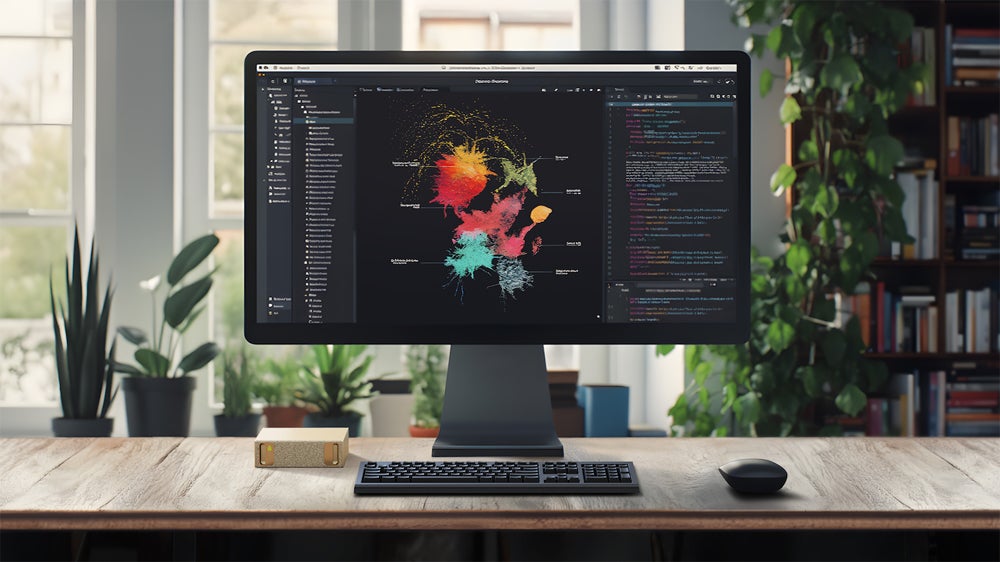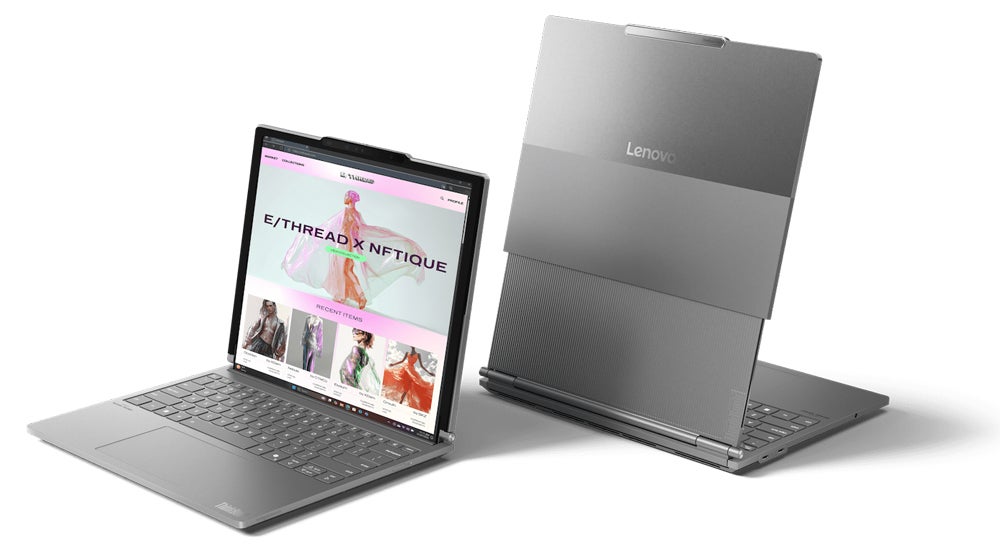Ad
CES brought this year’s top AI products and consumer devices to Las Vegas for a week of reveals. NVIDIA shaped many of these trends as the company that contributed to and benefitted from the artificial intelligence boom the most. TechRepublic has rounded up the top trends in commercial products and AI from the show.
Video Overview:
[embedded content]
Agentic AI is the next step for generative bots
Agentic AI, a buzzword throughout the last half of 2024, was a hot topic at CES. Agentic AI typically strings together multiple actions by several generative AI services to automatically perform tasks that would otherwise have taken a human worker hours or days to complete.
NVIDIA’s Blueprints for agentic AI are pre-built packages of NIM microservices and technologies from AI partners. For example, LangChain uses its own LangGraph, plus Llama 3.3 70B NVIDIA NIM microservices, to create reports. The agent searches the web and interprets the user’s request to provide the report in a given format.
Accenture sees agentic AI as useful for managing inventory, personalizing care for patients in clinical trials, and troubleshooting problems with industrial equipment. The company partnered with NVIDIA on its AI Refinery platform for deploying agents in business environments.
“Advancements in digitizing knowledge, new AI models, agentic AI systems and architecture enables enterprises to create their own unique cognitive digital brains,” said Karthik Narain, group chief executive of technology and chief technology officer at Accenture, in a press release.
Next-generation GPUs revealed
The chips powering generative AI training and inference and processors for laptops and PCs were at the top of my mind at CES 2025. The major processor announcements were:
The GeForce RTX 5090 GPU is a beneficiary of NVIDIA’s top-of-the-line Blackwell architecture. Developers can also look at the $3,000 Project DIGITS, which NVIDIA calls a desktop supercomputer. Project DIGITS uses the one-pentaflop NVIDIA GB10 Grace Blackwell Superchip for prototyping, tuning, and deploying generative AI models.
 The Project DIGITS desktop can run a petaflop of AI computing. Image: NVIDIA
The Project DIGITS desktop can run a petaflop of AI computing. Image: NVIDIA
“Fusing AI-driven neural rendering and ray tracing, Blackwell is the most significant computer graphics innovation since we introduced programmable shading 25 years ago,” NVIDIA CEO Jensen Huang said in a press release.
SEE: Microsoft gives laptops from various manufacturers the Copilot+ label if the devices can run generative AI locally.
More must-read AI coverage
Could AI make humanoid robots happen?
Huang expressed optimism about today’s generative AI finally making humanoid robot assistants a reality.
Humanoid robots tend to garner attention for their sci-fi swagger. However, the attempt to commercialize them has been rocky, from the quiet retirement of Boston Dynamics’ Atlas robot to a human operator controlling an allegedly autonomous Optimus robot at a Tesla promotional event in October.
NVIDIA’s differentiator is the Cosmos, which Huang called the “world foundation model platform.” The platform applies vast amounts of synthetic motion data to the problem. It builds on the Isaac GR00T research platform, which developers can access now. While GR00T helps a simulated robot learn from human movement, Cosmos creates physics-aware videos and models of physical environments to teach robots about navigating the world.
AI comes to autonomous and augmented driving
Autonomous cars are another CES staple. Full autonomy has remained a dream, but Waymo’s success marks a careful foray into making autonomous cars more common.
NVIDIA wants a place in self-driving cars as well. Huang announced that NVIDIA’s self-driving platform, NVIDIA DRIVE AGX Hyperion, has passed two industry safety benchmarks. Toyota and others signed onto NVIDIA’s driver assistance operating system. Plus, Uber will use the Cosmos model to experiment with AI-powered self-driving vehicles.
“Generative AI will power the future of mobility, requiring both rich data and very powerful computing,” said Dara Khosrowshahi, CEO of Uber, in a press release. “By working with NVIDIA, we are confident that we can help supercharge the timeline for safe and scalable autonomous driving solutions for the industry.”
Elsewhere in automotive software, Bosch developed a cloud-based system to warn drivers — and the drivers nearby using the same program — when they’re driving against the flow of traffic.
New laptops and laptop rebrandings go all-in on AI
As a consumer-focused show, CES offered many more devices, including high-definition TVs and powerful gaming PCs. But we found the featured laptops to be most remarkable for business.
Dell announced a new naming scheme and line of business laptops at CES 2025, among several other laptop and AI PC offerings. Lenovo leaned into AI with the ThinkBook Plus Gen 6 Rollable laptop, which unfolds from a 14-inch display to 16.7 inches and can run generative AI tools.
 Don’t try to roll the ThinkBook Plus Gen 6 Rollable into a tube shape, but the display does fold out. Image: Lenovo
Don’t try to roll the ThinkBook Plus Gen 6 Rollable into a tube shape, but the display does fold out. Image: Lenovo
The Snapdragon X Plus CPU and AI features are in the remarkably light (2.2 pounds) Asus Zenbook A14. Samsung announced a new Galaxy Book5 line powered by Samsung’s Galaxy AI.
“We are thrilled to make Galaxy AI and cutting-edge innovation accessible to more people than ever before, addressing their unique productivity needs on PC and other Galaxy devices,” said Changtae Kim, EVP and head of the new computing R&D team for mobile experience business at Samsung Electronics.
TechRepublic covered CES 2025 remotely.
Ad

